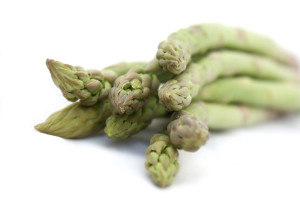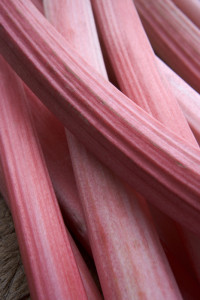Starting and keeping a Perennial Vegetable Garden
Many people think you need a lot of land or acreage to have a garden but that’s simply not true. Beautiful gardens that feed a family can be grown in as little as a small postage stamp front yard. One of the best ways to consider building a garden is to use perennial vegetables. Perennial vegetables mean you will not have to plant them again every year; they will come up automatically. By planting just a few you can be set for several years and they will continue to multiply. It helps to know which are the best ones to grow and how to grow them.
 Asparagus makes a great perennial vegetable although it does take a little longer to germinate and become ready for eating. The stalks are hardy and are harvested in the spring. Plant them in full sun with moist, well drained soil and they work best with a little bit of compost. This is a long-lived plant so it’s important to prepare the soil ahead of time for crops long into the future.
Asparagus makes a great perennial vegetable although it does take a little longer to germinate and become ready for eating. The stalks are hardy and are harvested in the spring. Plant them in full sun with moist, well drained soil and they work best with a little bit of compost. This is a long-lived plant so it’s important to prepare the soil ahead of time for crops long into the future.
Artichokes, not only make a great dinner time treat dipped in butter, but they’re beautiful in the garden as well. Because this is part of the sunflower family, the leaves and stocks can grow up to5 or 6 feet high and take up a good 3 feet in diameter. Typically if you plant these in the spring they can be over 6 feet tall with yellow flowers in the fall. Some gardeners may consider these invasive since they have underground rhizomes that spread.
Ramps, or wild leeks, is a small vegetable in the onion family with a white bulbous end turning to purple and then finally with lush green stalky leaves above ground. These are great to plant in amongst flowers and rose beds since they can multiply and create even more vegetables for the next year. Ramps are perfect to pickle, sliced up in stir-fries, or in a fresh salad.
Rhubarb is another generation old vegetable/fruit that is become almost extinct in most households gardens. It can take up quite a bit of space with its enormous leaves. It works well in part shade and colder climates and make sure not to eat the leaves as they are poisonous. Only the long red stems are edible and make delicious strawberry rhubarb pies.
Garlic and bunching onions is also a great option for perennial vegetables. Garlic takes about a year or more to get started but once it’s harvested you can keep it coming back every year. Bunching onions is also a good option as their hearty and whether over in cold climates. They’re great for pickling or to use in a relish tray or a martini.
Radicchio is also a great option for perennial vegetables. It’s a sharp flavored leafy lettuce with a reddish color and white veins. Grow it in well-drained soil and full sun every spring and it will be ready to harvest by August. Leave the roots in the ground and it will produce another crop.
Perennial vegetables make for an easy and low maintenance addition to your garden. Plant them in amongst flowers and other plants especially if you have limited space. Several of these may also do well in container boxes on decks or patios. Many hearty herbs such as thyme, rosemary, and sorrel make great container herbs that will weather over and usually go through very hard weather.
Give me a call if you’re interested in learning more about starting a perennial garden anywhere in Haverford, Springfield, or Drexel Hill Pennsylvania.



This is a topic that’s close to my heart… Many thanks! Where are your
contact details though?
Contact thru the website or phone number at the top of the home page.